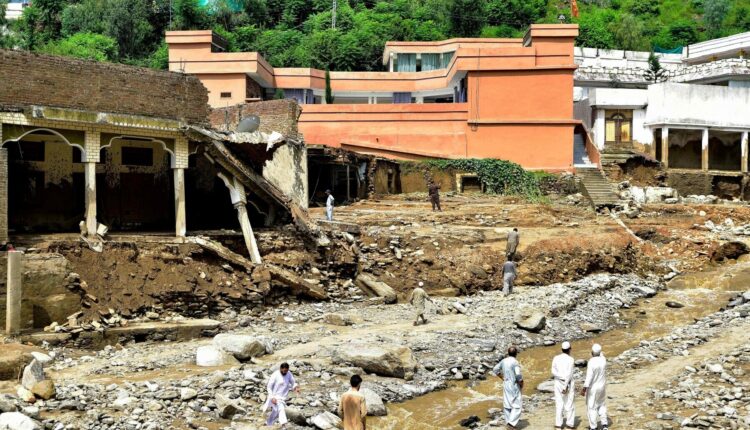
Independence Day turns tragic with deadly floods in Gilgit-Baltistan
Melting glaciers and sudden floods leave Gilgit-Baltistan residents stranded, vulnerable, and struggling without lifelines.
Gilgit-Baltistan – (Special – Correspondent / Web Desk) – On Pakistan’s Independence Day, Gilgit-Baltistan faced one of its darkest moments. The normally breathtaking valleys turned into disaster zones as sudden floods tore through villages, bridges, and roads.
The Karakoram Highway, often called the lifeline of the north, was damaged in multiple places. Swollen rivers swallowed farmland, while flash floods blocked roads and left thousands of passengers stranded. Even the optic fibre cable, which connects Gilgit-Baltistan to the rest of Pakistan, was severed, cutting off internet and mobile networks.
For locals, life became unbearable. Families in remote valleys like Shimshal and Chipurson were cut off from the world for days. Villagers watched helplessly as their homes, fields, and memories were washed away. The uncertainty of glacial behaviour added to the fear, with the Shishper glacier releasing repeated outburst floods.
In towns like Sost, Aliabad, and Passu, people described the devastation as sudden and unthinkable. For many, there was no time to escape or save belongings. Volunteers tried to help, but even some of them lost their lives while restoring damaged water channels and roads.
The scale of destruction revealed a harsh truth: Gilgit-Baltistan is deeply vulnerable to climate change. With over 8,000 glaciers melting rapidly, flash floods and glacial lake outburst floods are becoming more frequent and unpredictable.
For communities already living on the edge, the future feels uncertain. Without proper research, early warning systems, and resources, the roof of the world risks becoming a graveyard of broken roads, drowned villages, and lost lives.

Comments are closed, but trackbacks and pingbacks are open.